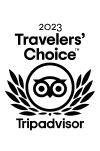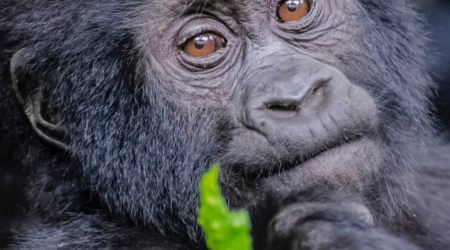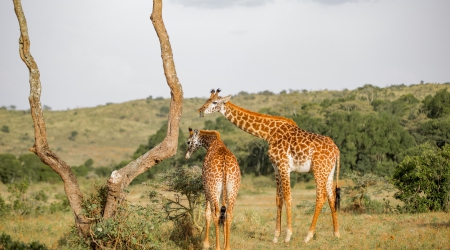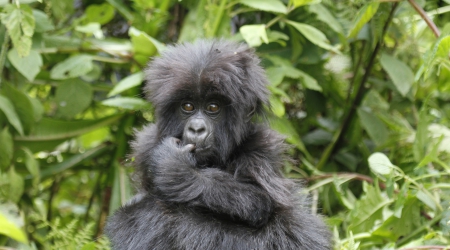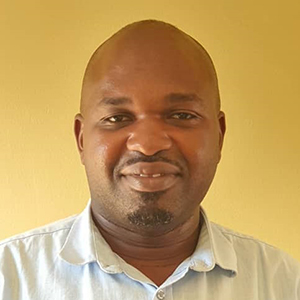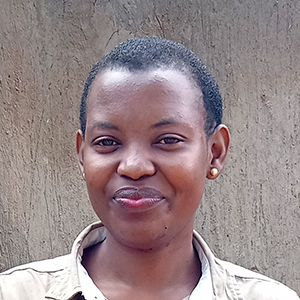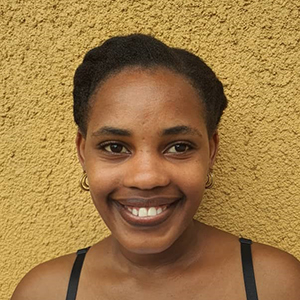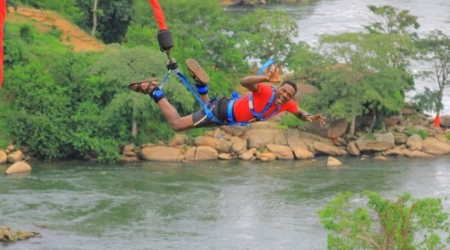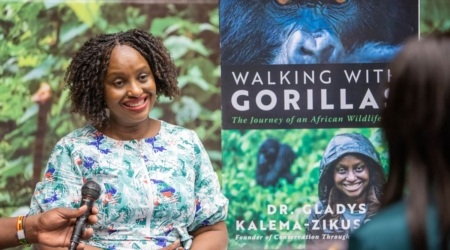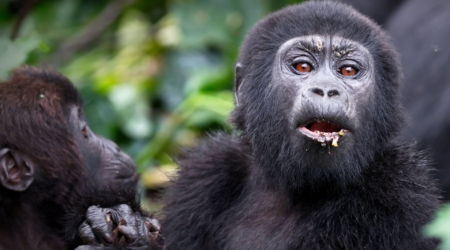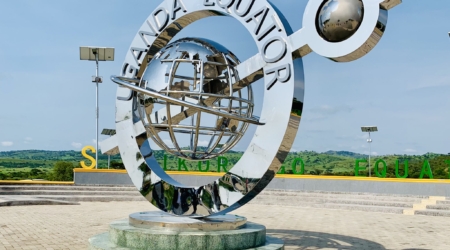Wildlife viewing in Uganda follows well-established ecological routes. Game parks and reserves are accessed through vehicle-based drives, guided walking trails, or specialised trekking permits. These methods align with conservation standards and serve a growing demand for close-range animal observation.
Among them, horseback safaris offer a radically different pace. They replace the hum of engines with the sound of hoofbeats, allowing movement that blends seamlessly with the environment. Riders can quietly follow game paths, access areas vehicles cannot reach, and maintain proximity to animals without sudden intrusion. You might be surprised where this is already possible.
Where Can You Go for Horseback Safaris in Uganda?
Horseback safaris in Uganda are available only in Lake Mburo National Park, a compact yet ecologically dynamic reserve located in Kiruhura District, western Uganda.
The park spans 260 square kilometres and is situated at the intersection of dry acacia woodland, open savannah, rock outcrops, and seasonal wetlands.
These biomes support a range of medium-sized herbivores and allow uninterrupted line-of-sight riding. Elevation ranges between 1,220 and 1,828 metres above sea level, offering moderate terrain that suits both novice and experienced riders.

The Uganda Wildlife Authority permits horse-based access only under strict ecological guidelines. Trails follow animal movement corridors and avoid breeding areas or bird nesting sites.
Rides take place in designated sections of the park during daylight hours and are led by licensed guides who have received first-aid training and certifications in wildlife awareness. Beyond wildlife observation, the experience provides access to areas that are not reachable by vehicle or foot patrol.
You’ll notice the difference immediately; movement feels quieter, more intuitive, and better timed to the rhythms of wildlife.
Logistically, Lake Mburo is situated along the Mbarara-Kampala highway, approximately a four-hour drive from the capital. This makes it a practical addition to southern Uganda itineraries that include Bwindi Impenetrable National Park, Lake Bunyonyi, or Queen Elizabeth National Park. The horseback experience is booked through an exclusive concessionaire located within the park, with bookings required.
READ ALSO: Women In Conservation in Uganda
What You’ll See on a Horseback Safari
Horseback safaris in Uganda via Lake Mburo offer reliable sightings of non-predatory grazers and browsers that frequent open grasslands, light woodlands, and salt lick zones.
These include plains zebra, impala, topi, and warthog.
Eland, Uganda’s largest antelope, is frequently seen in family groups, particularly in mid-morning hours. Waterbuck and bushbuck may also be visible along shallow valley edges.
Although carnivores are present in the park, including leopards and hyenas, they rarely appear during riding excursions. The horseback routes focus on safe zones with predictable game presence.
Birds are often observed incidentally, especially helmeted guineafowl, grey crowned cranes, and bare-faced go-away-birds.
Horses follow walking or trotting paces, which reduce animal startle responses. Riders can approach herds slowly without triggering flight behaviour.
This quiet proximity changes the nature of observation, making the encounter feel grounded and unforced.
Vegetation and Habitat Types
The ecological character of Lake Mburo encompasses savanna grasslands, scattered acacia woodlands, and isolated pockets of papyrus wetlands.
Acacia hockii dominates the woodland belt, forming sparse shade over firm ground. During dry seasons, the grass layer remains short, increasing visibility. In wetter months, grass grows taller, but trails remain passable.
Along lake edges and seasonal streams, riders may pass through denser thickets composed of Combretum and Albizia species.
The variety in ground cover directly influences the type of wildlife visible. Open habitats favour zebras and topis, while elands and bushbucks prefer transitional zones near water or woodland margins.
Vegetation types change gradually along the riding loops. Guides often adjust their pace or pause at grazing zones based on the presence of wildlife.
Time-of-Day Considerations
Morning rides (8:00 to 10:30) are generally preferred for visibility, comfort, and animal movement.
During this window, most herbivores forage in open areas before retreating to shaded zones.
Afternoon rides (3:30 to 6:00) offer warmer light and provide opportunities to observe dust bathing, herding behavior, and mild predator movement.
Temperatures in Lake Mburo fluctuate between 17°C and 30°C throughout the year. During the hotter months, midday rides are avoided due to heat stress for both the rider and the animal. Riding is not allowed at night.
Advance coordination allows guides to recommend specific time slots based on wildlife cycles, weather conditions, and trail conditions following rain.
Why opt for Horseback Safaris in Uganda?
Horseback safaris in Uganda operate within a specific ecological and logistical niche. Their appeal lies not only in novelty but in how they alter movement, distance, and observation.
1. Silent Mobility Improves Wildlife Observation
Horses move without engines, electrical sounds, or amplified human presence. This acoustic neutrality enhances the tolerance of wildlife, particularly among herbivores that rely on auditory signals to assess risk. With no metallic clatter or revving motors, animal reactions remain measured. Riders can enter a clearing, observe a herd, and move on without forcing withdrawal or stress responses.
2. Expanded Access Across Ecological Zones
Horseback routes provide access to areas that are inaccessible by vehicle and impractical to reach on foot. Shallow valleys, ridgeline loops, and salt licks can be approached directly. This flexible access improves environmental exposure and expands interpretive range. Riders pass from wooded thickets into grassland edges and out onto open grazing zones in a continuous sequence.
3. Closer Range Without Interruption
Guides maintain a calm pace through animal corridors, allowing for proximity without abrupt changes in noise, silhouette, or speed. The result is smoother wildlife interaction. You might find yourself 10 metres from an eland group without triggering an alarm. That stillness creates space for actual observation; behaviour, orientation, feeding order, not just identification and departure.
4. Adaptive for Varying Experience Levels
Horseback safaris cater to riders with varying skill levels. Guided options include one-hour loops for first-time participants and extended trail rides for confident riders. Horses are selected and matched according to rider comfort and size. Basic orientation precedes every ride. If you’re concerned about your ability to manage a trail horse, the guides account for that from the start.
Who Can Join a Horseback Safari?
Mihingo Lodge began its horse safari operations in December 2008, located outside Lake Mburo National Park.
In November 2009, they secured a concession that allowed them to operate horse safaris inside Lake Mburo.
Rides are adjusted based on each participant’s riding ability. For beginners, the lodge recommends walking; for more advanced riders, some stretches allow trotting and cantering.
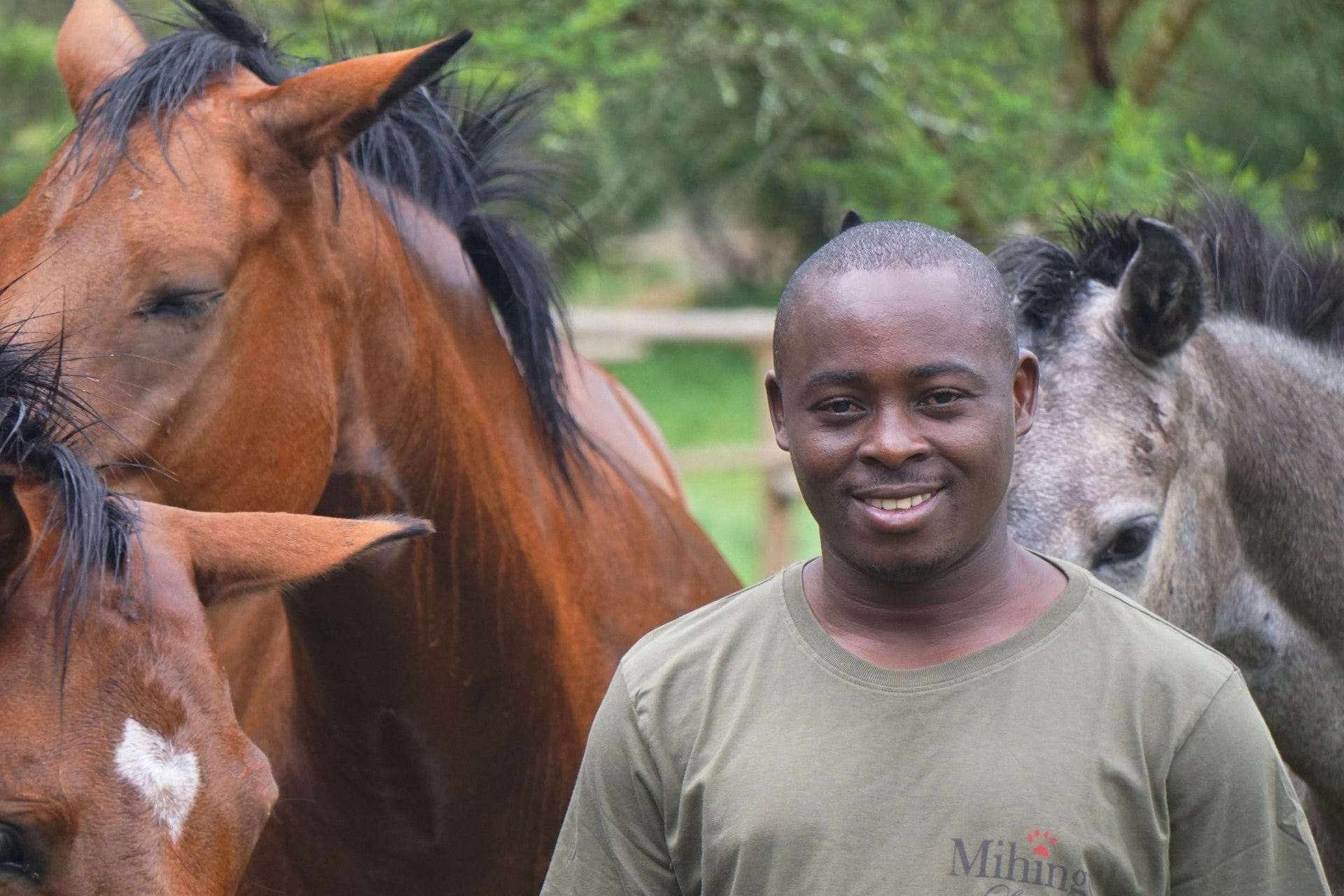
Weight Limits, Guide Support, and Child Participation
The maximum permissible riding weight is 100 kg, though most horses cannot carry more than 85 kg. All rides are accompanied by at least one experienced horse guide.
In many cases, two guides join a ride. According to the Park site information, children may be led on gentle ponies for short rides.
Ride Durations, Scheduling, and Booking Requirements
Rides range from 30 to 60 minutes for short loops to half-day excursions. Overnight, two-day, and three-day riding safaris are also available. The 30–60 minute taster ride in the grassy valley near the lodge is priced from US$40 to US$60. The half-day option may cost up to US$240. When booking, prioritize early confirmation since slots and horses are limited.
What to Pack for a Horseback Safari
Wear long trousers to protect your legs from saddle friction and brush exposure. Jeans or riding-specific pants are recommended.
Avoid shorts, skirts, or loose fabrics that can shift under pressure. Closed footwear is mandatory. Ideally, bring ankle-high boots with a low heel to prevent slipping through stirrups.
The operator provides helmets and chaps. You do not need to bring your own unless you prefer custom-fitted gear. Long sleeves are encouraged, especially for sun protection and insect avoidance. Gloves are optional but helpful for longer rides.
Sun and Weather Protection
Pack a high-SPF sunscreen and apply it before the ride. Reapplication is difficult once mounted. A wide-brimmed hat is unnecessary during the ride itself, as helmets are worn, but it is helpful before and after.
Consider carrying a light, quick-drying rain jacket during wetter months. The park receives intermittent afternoon showers, particularly from March to May and September to November. Sunglasses must fit securely or use a retaining strap to avoid loss during movement.
Insect repellent with DEET is advisable year-round. Acacia woodland and lake zones may host biting flies or mosquitoes.
Equipment and Essentials
Carry a reusable water bottle. Rides do not always return to base mid-way, so hydration planning is essential. Most guides carry emergency water, but not personal quantities for every rider.
If you plan to take photos, bring a compact camera with a neck strap. Bulky equipment is discouraged. Phones can be used for quick shots, but make sure they are secured. If you’re concerned about carrying loose items, consult with your guide about what’s practical to bring on the trail.
Items to Avoid
Avoid plastic bags, dangling accessories, or over-packed backpacks. They create noise and can spook animals. Selfie sticks, drones, or large zoom lenses are discouraged unless approved in advance.
Do not carry snacks. Food smells may distract horses and attract unwanted animal interest. Riding with food is also uncomfortable and impractical during active movement.
Best Time for Horseback Safaris in Uganda
Uganda’s rainy seasons occur from June to August and from December through February. During these months, horseback trails remain firm, grass cover stays low, and visibility improves.
Wildlife congregates around known water sources and salt licks, which increases the likelihood of sightings. Acacia woodland remains passable, and horses experience less footing variability.
Morning temperatures are mild. Trails allow for longer riding durations without excessive fatigue for both the rider and the animal. Photographic opportunities increase, especially during golden-hour rides near sunset.
Guides typically recommend booking during the dry season for riders who prefer stable footing and extended route options.

Rainy Season Adjustments
March to May and September to November bring seasonal rains to Lake Mburo National Park.
Grass height increases, and some riding trails become temporarily saturated. Wildlife disperses into wider habitat zones, often moving into inaccessible lowland areas after heavy rainfall.
That said, the horseback concession may still offer short rides on designated higher ground. Ride durations may be shortened, and availability is subject to daily trail assessment.
Additionally, horse maintenance requires extra scheduling during periods of high moisture.
Trail surface conditions vary significantly within the same week. Operators may suspend riding temporarily to allow terrain recovery.
Conclusion: Book with Us
Horseback safaris remain a highly specialised but meaningful offering within Uganda’s wildlife tourism framework. Their limited geographic availability is balanced by ecological sensitivity, proximity to wildlife, and operational discipline.
For national planners, tour designers, and experience-focused travellers, they provide a quiet alternative that alters how natural spaces are accessed and perceived.
If you are evaluating activity formats to diversify wildlife engagement without expanding your environmental footprint, this option warrants consideration.

